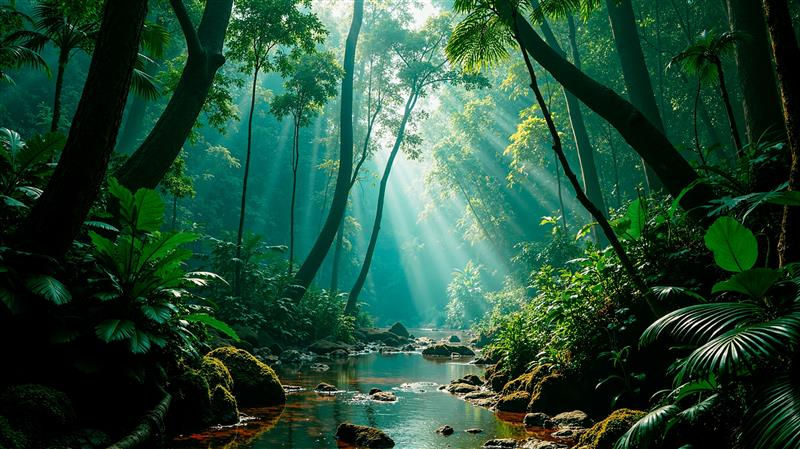Arctic Expedition Reveals Climate Tipping Points in Real Time
- Impact X

- Jul 14
- 4 min read
Updated: Jul 18

A groundbreaking 15,000-kilometre Arctic expedition has provided unprecedented insights into six critical climate tipping points, revealing how rapidly these systems are changing and what this means for global stability and business risks.
The Arctic is warming four times faster than the global average, creating what scientists call "ground zero" for Earth system changes. This reality was starkly demonstrated during a recent four-month expedition through the Northwest Passage, where researchers witnessed firsthand the dramatic transformation of critical climate systems.
Led by Australian investment banker turned climate advocate Keith Tuffley, the voyage provided real-time evidence of the planetary tipping points that could fundamentally alter global climate stability. The expedition collected scientific data across six of the 16 identified tipping points, offering business leaders crucial insights into the systemic risks facing the global economy.
The Science Behind the Urgency
The expedition's scientific framework was built around planetary boundaries – thresholds designed to avoid tipping points and maintain Earth's resilience and stability. Johan Rockström, director of the Potsdam Institute for Climate Impact Research, explained the stakes: "We are today at a point of 1.54 degrees Celsius of warming beyond the global pre-industrial level. But not only that, over the last decade, we have seen acceleration of the warming, which we don't even understand."
The implications are profound. Current scientific assessments indicate the planet is at the highest risk point in human history, with warming occurring faster than previously expected. Rockström emphasised the narrow window for action: "We only have basically years to decades to be able to turn around the development of the world to avoid irreversible changes."
Six of the nine planetary boundaries are now outside their safe operating space, including climate change, biodiversity loss, and ocean acidification. "The planet is under threat. But number two, it's not too late," Rockström noted, though he warned that maintaining 1.5°C warming would require accepting temporary overshoots.

Witnessing Transformation at Ground Zero
The expedition's most striking revelation came at the Jakobshavn Glacier in Greenland, which produces 10% of the country's calving ice. Tuffley described the moment: "It just so happened that this was the hottest day ever recorded by NASA on Earth, and here we were at the site of the largest single source of melting ice outside of Antarctica."
The contrast with historical conditions was stark. Where Sir John Franklin's expedition became trapped in ice for two years in the 1840s, Tuffley's team sailed through completely open waters. "This is clear evidence of what we're doing to our planet because of human-made climate change," he observed.
The expedition's environmental DNA sampling, conducted by NatureMetrics founder Kat Bruce, revealed the hidden biodiversity impacts. "The crew never saw beluga whales on their trip at all, and yet they captured this DNA 15 times on 15 different days," Bruce explained, demonstrating how traditional observations miss crucial ecological changes.
Business Implications and Systemic Risk
The interconnected nature of these tipping points creates cascading business risks. Systems like the Greenland Ice Sheet, Atlantic Ocean circulation, and Amazon rainforest are pivotal elements that, if destabilised, could trigger irreversible changes across Earth's systems.
Rockström highlighted positive developments that offer hope for business transformation. Carbon pricing mechanisms now operate in 47 countries, representing 25% of global nations. "The European Union is today moving forward with the carbon border adjustment mechanism, which is putting a levy on all imports into the European Union from countries who do not apply a price on carbon," he noted.
The expedition also revealed the potential for rapid technological and social tipping points. When positive solutions penetrate over 20% of any market, they can trigger irreversible shifts toward exponential change – similar to how the iPhone revolutionised mobile technology.

The Biodiversity Factor
Bruce's analysis revealed that biodiversity represents both a climate risk and solution. The expedition identified almost 800 species across the Arctic, from microbes to whales, many playing crucial roles in carbon sequestration. "Biodiversity is something that has incredible resilience and an incredible ability to bounce back," she explained.
However, only 14% of the tiny organisms captured could be identified by species, highlighting how poorly understood these critical systems remain. "These species are doing everything from cycling nutrients to sequestering carbon," Bruce emphasised.
Strategic Implications for Leaders
The expedition findings suggest three critical imperatives for business leaders. First, the window for gradual change has closed – transformation must be rapid and systemic. Second, the interconnected nature of tipping points means risks cannot be managed in isolation. Third, while the situation is urgent, technological and social solutions exist and are scaling rapidly.
The choice facing organisations is stark: "We can alternatively do nothing at all. But make no mistake: Even doing nothing is a choice we make."
The Arctic expedition demonstrates that climate tipping points are not distant threats but present realities reshaping global systems. For business leaders, this represents both an urgent call to action and evidence that rapid transformation, while challenging, remains achievable. The question is no longer whether these changes will occur, but how quickly organisations can adapt to the new reality they create.







